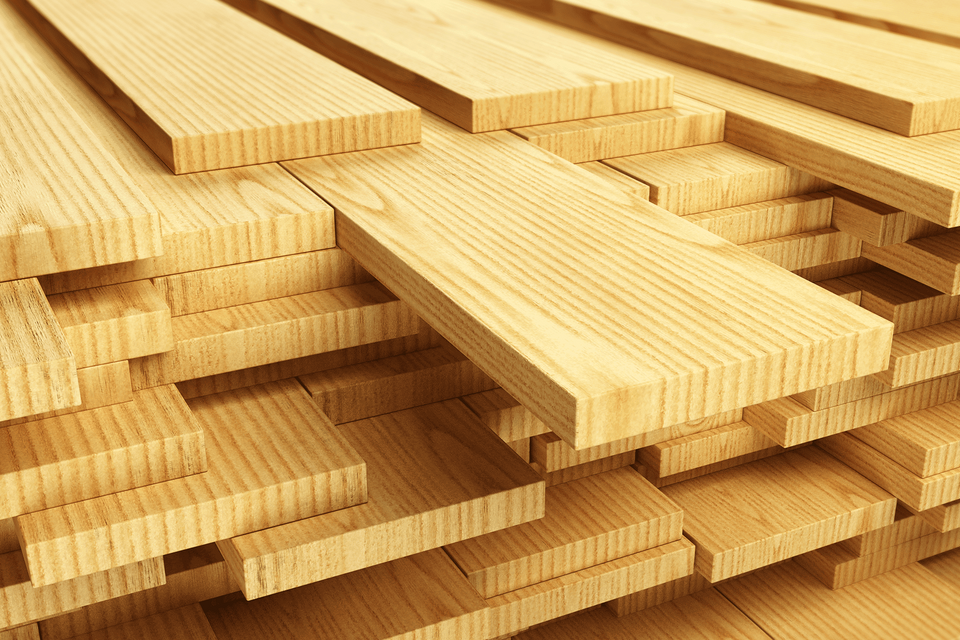A flagging demand drove down market prices in April, but it wasn’t due to a lack of business. For most of this year, buyers have been bolstering their normal volumes based upon extended delays due to the trucking shortage and, as this material has finally reached its destination dealers are, for the most part, flush with stock. As buying has ceased, pricing has retreated and long-awaited improvements to availability and lead times has helped to assuage buyer’s concerns about obtaining material…for now. As the market corrects, dealers are astutely sitting on the sidelines, observing the market and only buying what is absolutely necessary for near term business. However, there is a clear warning from traders and mills cautioning dealers to not get too lean, as an all-in replenishment may get us right back to where we were, with rising costs and an inability to get prompt wood. Although business is strong, the effects of jobsite delays due to the lack of the availability of other building materials (such as engineered wood, siding, windows, etc.) continue to slow down the pace of construction and stock market upset, rising fuel costs, inflation and supply chain interruptions caused by the Russian – Ukranian war (which has significantly hurt the availability of European lumber) are also weighing heavily upon consumption. With prices faltering in a market with strong outtake, most traders are surmising that dealers are under-bought for near term needs and that a rally will eventually ensue, but they might not appreciate the volume of additional stock dealers have secured when lead times were long or realize how much supply constrictions are hampering forward progress. Although there may be an episode of replenishment buying that could create a pause or reversal in the market correction, it appears that buyers will continue to live hand-to-mouth for as long as the market corrects and, as mills’ order files dwindle, pricing continues to move at a downward trajectory. With this in mind, we anticipate pricing to continue correcting in May with the outside chance of it firming if a pop of business spurs the market.
It’s very easy to tune out the boatload of information thrown at us in this industry, especially when that information is coming at you from all angles as more and more building products become more and more complex. We only have so much valuable time in the day and distractions are numerous, so attention spans can be short when dealing with the fine print, especially if it appears after a 138 page instruction manual. However, knowing when to pay attention is key and that takes a discipline that is hard to obtain (but one we’re willing to help you with). Many of the products we buy and sell today are far different than the ones that they are intended to replace: new technologies and the use of alternative materials have introduced many new and/or “improved” products. However, it’s a rarity if they don’t exhibit some shortcoming or quirk that is different from the old product if care, handling, installation and finishing instructions aren’t followed to the letter of the law. In order for them to perform as intended, it is imperative that installers read and follow directions because, when they don’t, product failure or customer dissatisfaction will surely follow. For instance, even though it’s much more durable and easier to install than felt paper, most synthetic roof underlayments cannot be used on a natural Western Red Cedar shingled roof installed over plywood due to their low permeability rating. Or did you know that you must never caulk the butt-joint of a prefinished fiber-cement lap siding with its matching-color caulk because the caulk will quickly fade and not match the finish? How about that pressure treated warranties require you to end-seal a non-factory cut end, every time? These “minor details” can lead to expensive problems down the road if overlooked and to presume that any modern product can simply be installed in the same manner or under the same applications as the old product is no longer an assumption that any of us can take, as few behave identically to their older counterparts. For our part, we will put additional notes and disclaimers on our product codes to give warning of the potential issue but, as earlier noted, it can be difficult to stop, read and comprehend all that is thrown at us. Our best defense against future issues is providing you with the right product for the job and ensuring that all are apprised of how critical it is to follow the product manufacturer’s recommendations for care, handling, installation or finishing instructions. We have a lot of experience with the products we sell and are always more than happy to give you guidance on its installation, but it should also be noted that most of our manufacturers have done a superb job in designing user-friendly websites, Apps or YouTube videos that can be really helpful to refer to prior to installation. We understand that taking the time to learn and understand the processes required for a proper installation is difficult in your busy lives, but we are sure that your investment will pay off in dividends. Please remember that we are just a phone call, text or e-mail away to help. Thank you for your business!
